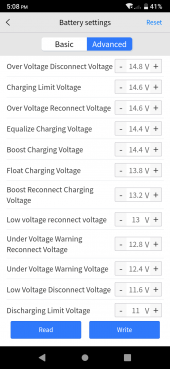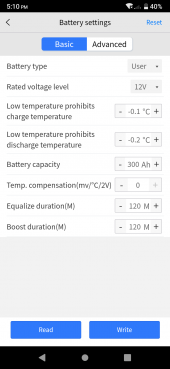You analogy is not wrong. It indeed partly explains my point. If the new lithium batteries the OP got needs more to charge than her previous AGM batteries did than she can find herself having not enough solar power to charge them.I.E. our new gas tank holds more gas so we need to put more gas in it initially. If all other things are the same we simply maintain more reserve (more gallons in our larger tank) than with our old tank.
A complication with batteries over fuel tanks is batteries you want to fully charge if possible. You can get by only filling a tank part way with no consequences.
Last edited:




